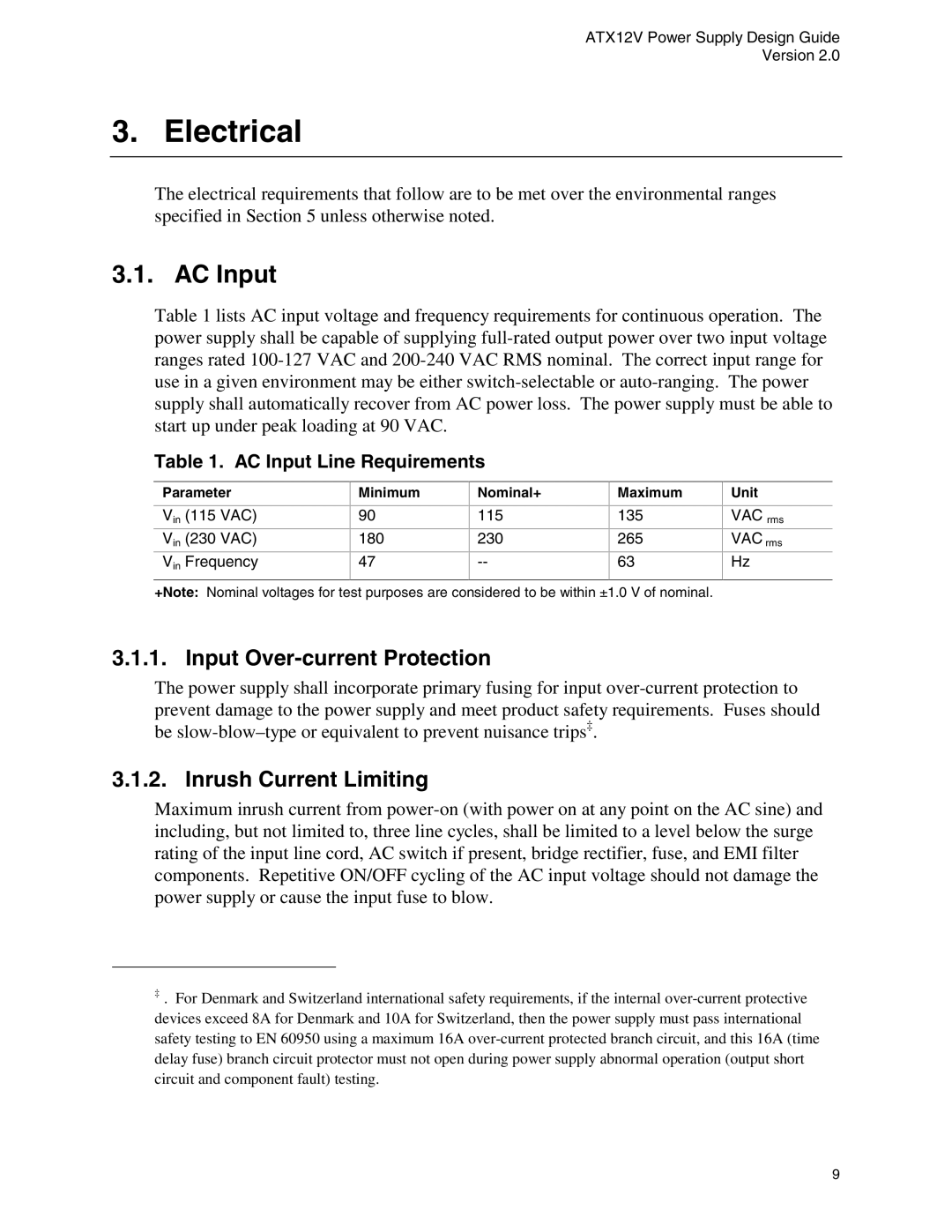ATX12V Power Supply Design Guide
Version 2.0
3. Electrical
The electrical requirements that follow are to be met over the environmental ranges specified in Section 5 unless otherwise noted.
3.1. AC Input
Table 1 lists AC input voltage and frequency requirements for continuous operation. The power supply shall be capable of supplying full-rated output power over two input voltage ranges rated 100-127 VAC and 200-240 VAC RMS nominal. The correct input range for use in a given environment may be either switch-selectable or auto-ranging. The power supply shall automatically recover from AC power loss. The power supply must be able to start up under peak loading at 90 VAC.
Table 1. AC Input Line Requirements
Parameter | Minimum | Nominal+ | Maximum |
| | | |
Vin (115 VAC) | 90 | 115 | 135 |
Vin (230 VAC) | 180 | 230 | 265 |
Vin Frequency | 47 | -- | 63 |
| | | |
+Note: Nominal voltages for test purposes are considered to be within ±1.0 V of nominal.
3.1.1. Input Over-current Protection
The power supply shall incorporate primary fusing for input over-current protection to prevent damage to the power supply and meet product safety requirements. Fuses should be slow-blow–type or equivalent to prevent nuisance trips‡.
3.1.2. Inrush Current Limiting
Maximum inrush current from power-on (with power on at any point on the AC sine) and including, but not limited to, three line cycles, shall be limited to a level below the surge rating of the input line cord, AC switch if present, bridge rectifier, fuse, and EMI filter components. Repetitive ON/OFF cycling of the AC input voltage should not damage the power supply or cause the input fuse to blow.
‡. For Denmark and Switzerland international safety requirements, if the internal over-current protective devices exceed 8A for Denmark and 10A for Switzerland, then the power supply must pass international safety testing to EN 60950 using a maximum 16A over-current protected branch circuit, and this 16A (time delay fuse) branch circuit protector must not open during power supply abnormal operation (output short circuit and component fault) testing.

